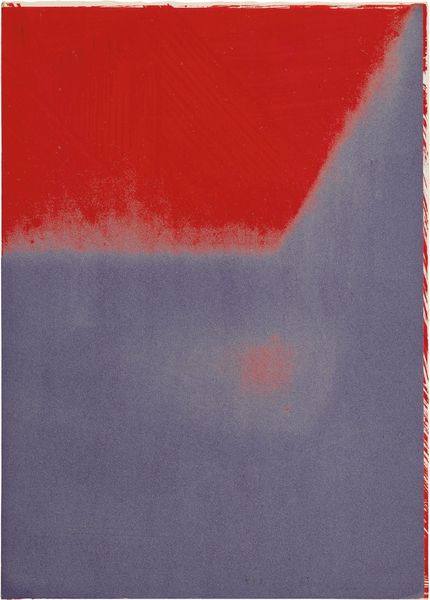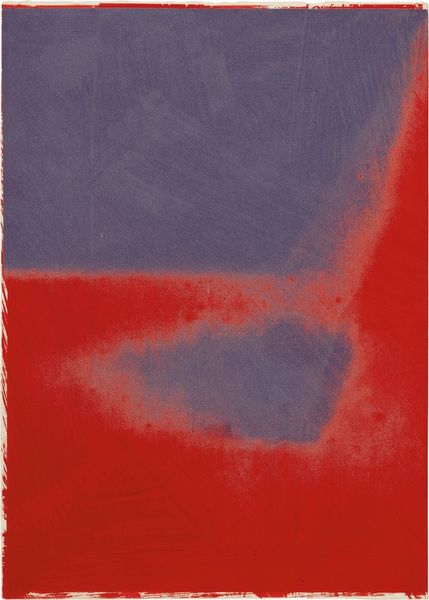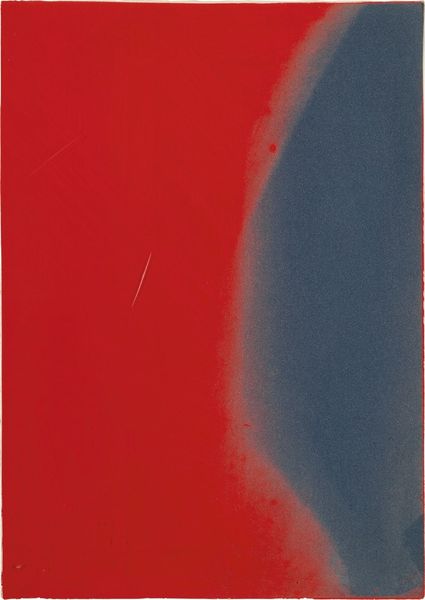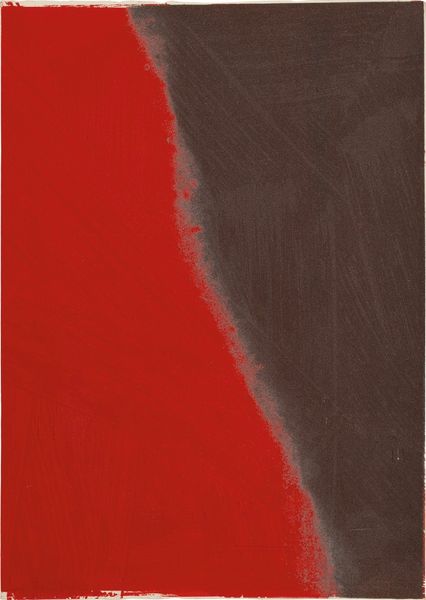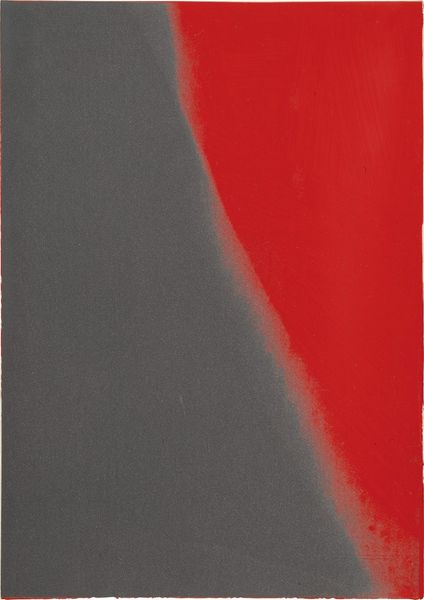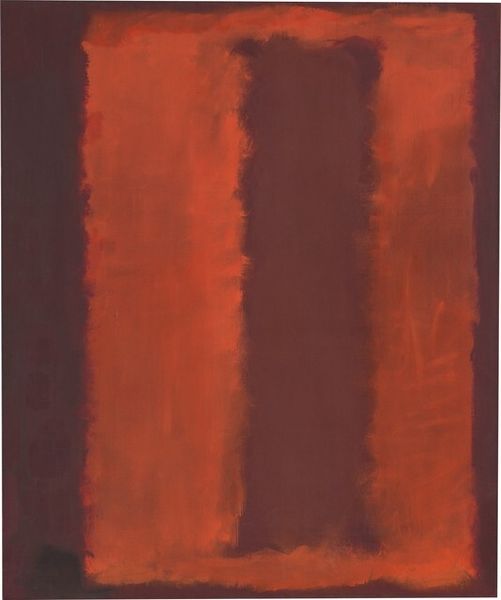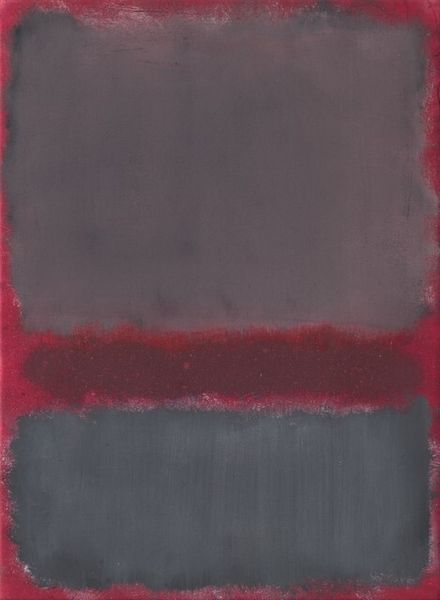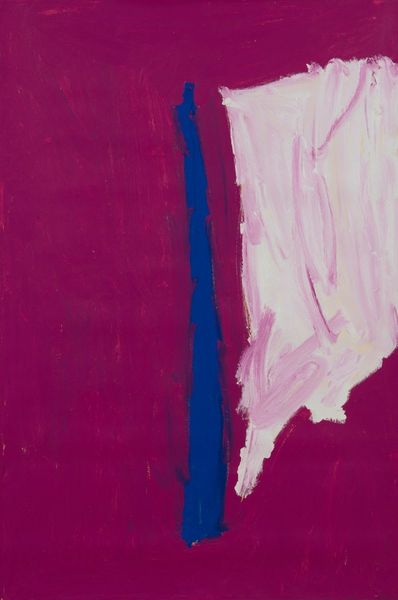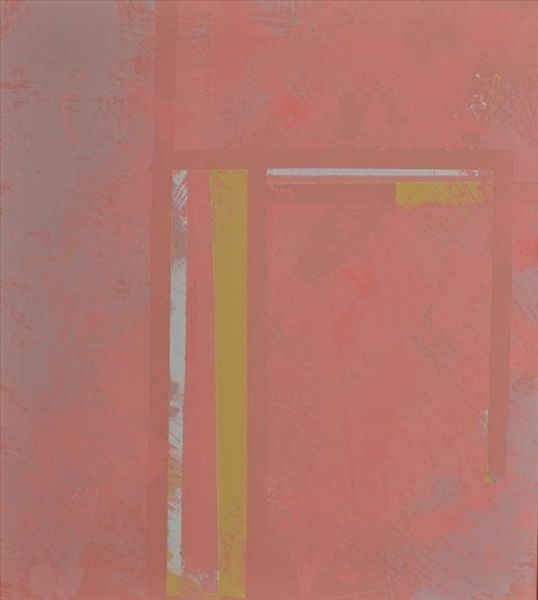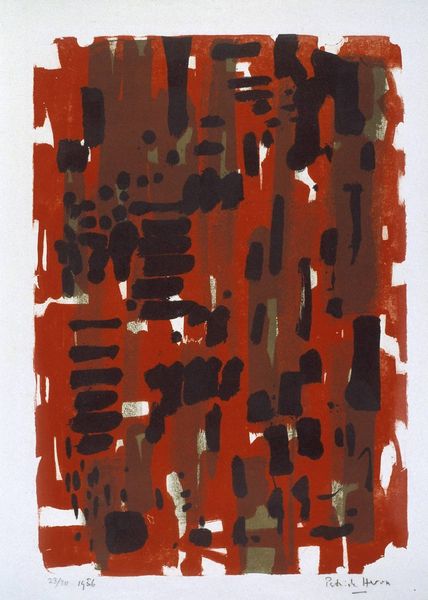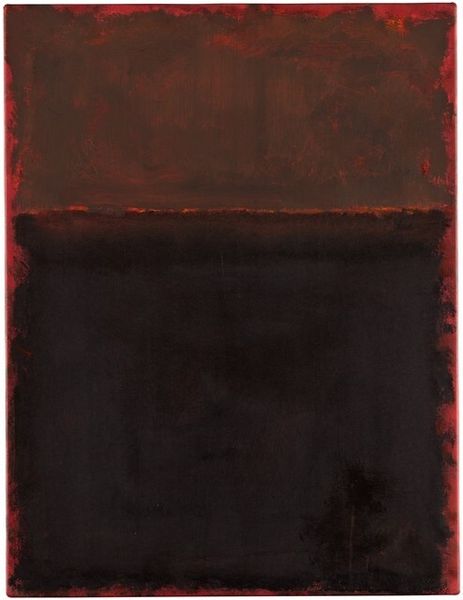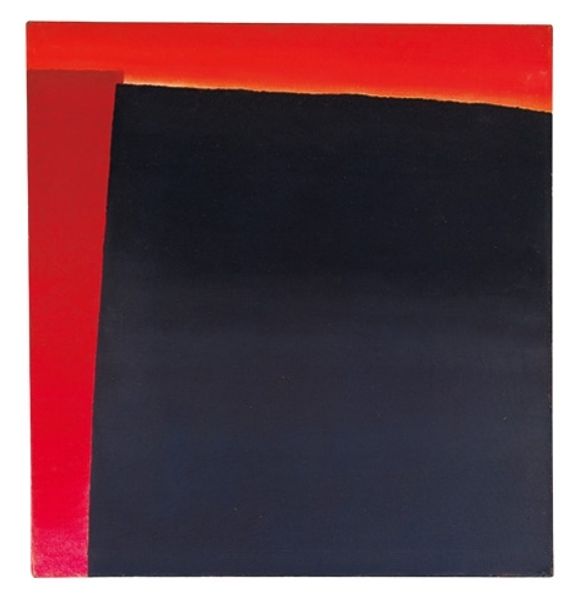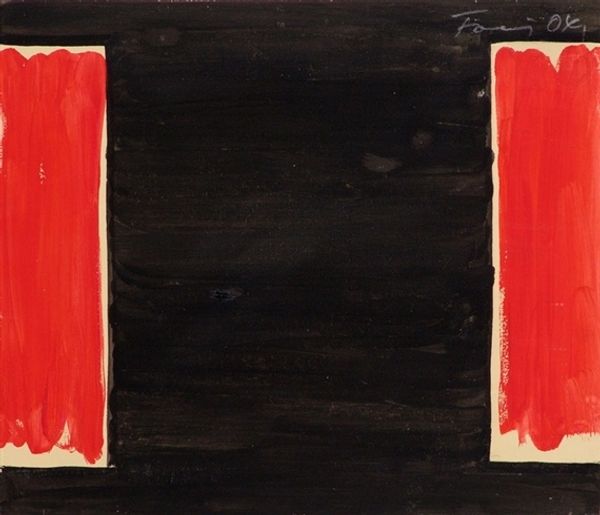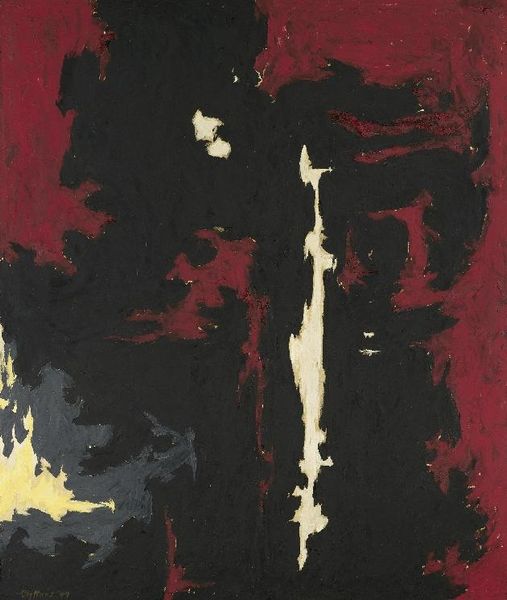
Copyright: Modern Artists: Artvee
Curator: Andy Warhol’s *Shadows I #2* from 1979 is an interesting piece of mixed-media work, combining screenprint and acrylic paint. What's your initial take? Editor: Well, right off the bat, it's... haunting. That vast expanse of almost oppressive gray, and then, like a raw nerve, this slash of bright red struggling for attention. I'm both captivated and unnerved. Curator: The serial nature of Warhol’s art production is fascinating. We can see how mechanical reproduction influences the perceived "aura" of the work, right? Editor: Absolutely, the factory-like aspect is visible. I almost want to touch it, to see how the surface shifts from that dense, grey matter to the aggressive, visceral red. Does it feel as mass-produced in person, as the colours bleed into one another in the light and shadow? Curator: Indeed. The silkscreen element connects it to Warhol's earlier pop works, reflecting his interest in mechanization, mass culture and appropriation but this particular work sees him veer from explicit pop imagery to near abstraction. Think about it - he has taken the format from commercial process and elevated to high art, almost daring the viewer to see the shadow as a commodity as much as a motif. Editor: He challenges us, yes? Like, "How much are YOU projecting? Is there really shadow or just your dread?" And that minimal pop art background throws a new perspective to our vision, an existential dread coated in candy paint, I suppose? Curator: The physicality cannot be dismissed. From what I understand about the making, Warhol was invested in the production: screen-printing, then assistants applying acrylic. It's collaborative but ultimately still driven by his aesthetic decisions, his choices about color, composition and his overall questioning about the means of production that makes it undeniably post-modern. Editor: Postmodern angst on canvas. It's like a whispered secret, one that Warhol might have chuckled over. Overall it gives a lingering feeling of… incompleteness, of a puzzle without all its pieces. Curator: Perhaps the puzzle, like art itself, is perpetually unfinished. It speaks to our constant need for new experiences with materials, methods and the changing means of their construction. Editor: Absolutely and with the shadows looming we could look deeper into his statement about commercialization. It is provocative!
Comments
No comments
Be the first to comment and join the conversation on the ultimate creative platform.
